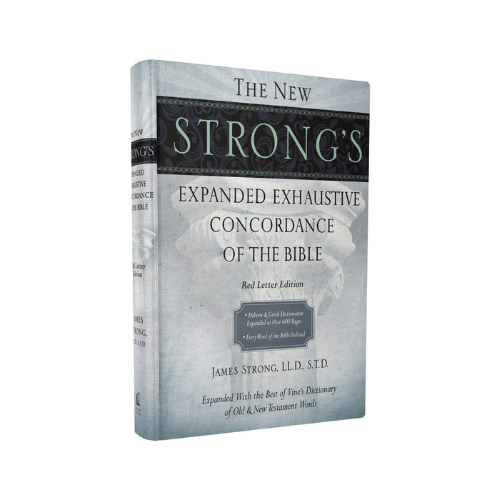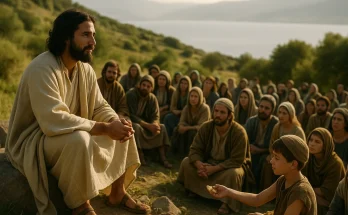Why do we remember Thomas for his doubt and not his devotion? We’ve all heard the nickname – Doubting Thomas. It’s become shorthand for anyone who refuses to believe without proof. Yet, when we dig into John 20:24–29, we find far more than a man stumbling in unbelief. We find someone a lot like us.
Let’s be honest. We’ve all had moments where we needed more—more clarity, more reassurance, more of Jesus. That’s where Thomas was. But instead of hiding his questions, he spoke them out loud. And surprisingly, Jesus didn’t shame him. Instead, He offered exactly what Thomas needed to believe.
So why has history branded him a doubter?
In this character study, we’re not here to judge Thomas—we’re here to learn from him. Because behind the doubt, we find honesty. Beneath the questions, we see courage. And after the encounter with the risen Christ, we hear one of the strongest confessions in all of Scripture: “My Lord and my God!”
Maybe we’ve missed something essential about Doubting Thomas. Maybe he’s not a warning, but a guide.
What if doubt isn’t the enemy of faith—but the beginning of it?
Strengths & Accomplishments of Doubting Thomas
When Lazarus died, Jesus announced His plan to return to Judea—dangerous territory for the disciples. Yet Thomas didn’t flinch. In John 11:16, he boldly declared, “Let us also go, that we may die with him.” That wasn’t sarcasm. It was loyalty. While others hesitated, Thomas was ready to follow Jesus into risk, even death. Clearly, Doubting Thomas had a backbone many overlook.
Courage Under Fire
We often focus on his moment of doubt, but we forget his earlier courage. Thomas wasn’t timid. He understood the stakes and still chose faithfulness. That kind of bravery doesn’t shout—it stays steady when others walk away. In today’s world, quiet courage like his is rare, yet deeply needed.
Thoughtful and Honest
In John 14:5, Jesus spoke of going away to prepare a place. The disciples were confused, but Thomas was the one who spoke up. “Lord, we don’t know where you are going, so how can we know the way?” His question opened the door for Jesus to declare, “I am the way and the truth and the life.” Doubting Thomas wasn’t slow to believe—he simply wanted to understand. His questions gave us answers still cherished today.
A Bold Confession of Faith
When the risen Christ stood before him, Thomas didn’t hold back. He didn’t offer excuses or hide his doubt. Instead, he cried out, “My Lord and my God!” (John 20:28). That’s not just a confession—it’s a declaration of worship. Ironically, Doubting Thomas was the first to proclaim Jesus as both Lord and God after the resurrection.
A Gospel Legacy in Distant Lands
Church tradition tells us that Thomas carried the gospel all the way to India. He planted churches, preached Christ, and ultimately died as a martyr. That’s not the legacy of a man paralyzed by doubt. That’s the impact of someone transformed by truth. His faith didn’t shrink—it expanded across cultures and continents.
Parables: The Mysteries of God’s Kingdom Revealed Through the Stories Jesus Told by John MacArthur
So let’s rethink the label. Doubting Thomas was a loyal friend, a brave follower, an honest seeker, and a bold proclaimer. That’s a resume worth remembering.
Weaknesses & Mistakes of Doubting Thomas
When Jesus first appeared to the disciples after His resurrection, Thomas wasn’t there (John 20:24). We don’t know why he was absent, but it cost him. While the others rejoiced, Thomas was left behind in grief and confusion. Because he missed that moment, his heart slid into a crisis of belief.
Later, when the others shared the good news, he didn’t celebrate. Instead, Doubting Thomas laid down conditions. In John 20:25, he said, “Unless I see the nail marks… I will not believe.” That’s a strong statement. He wasn’t just uncertain—he was unmoved by their testimony.
Truthfully, we’ve been there too. Sometimes we want evidence before trust, answers before obedience. Like Thomas, we build walls of unless and until. We want faith to be easy, but it rarely is.
However, Thomas’s real mistake wasn’t asking questions—it was delaying the search for answers. He stayed in his doubt instead of running toward resolution. Jesus didn’t shame him, but He did challenge him: “Stop doubting and believe” (John 20:27).
We should take that to heart. Doubt isn’t a sin, but lingering in it without pursuit can leave us stuck. Thankfully, Jesus invites us to draw near, even in our questions.
Doubting Thomas reminds us that it’s okay to wrestle with faith, but we must keep moving toward truth. We can’t let doubt become our final word.
Lessons from His Life
One of the most powerful takeaways from Doubting Thomas is that God doesn’t fear our questions. Jesus didn’t rebuke Thomas with shame or rejection. Instead, He said, “Put your finger here… Reach out your hand” (John 20:27). That invitation speaks volumes. Rather than scolding Thomas, Jesus drew him closer. Clearly, honest doubt isn’t dangerous—it’s an opportunity for deeper faith.
Faith Can Grow Through Doubt
Thomas’s story shows us something surprising: doubt can actually strengthen belief. But only if we bring it to Jesus. If Thomas had walked away, we would have missed his beautiful confession. Instead, he waited, wrestled, and then responded in faith. Sometimes our doubts force us to dig deeper. And when we do, our roots grow stronger than ever.
Jesus Meets Us Where We Are
Jesus didn’t wait for Thomas to catch up spiritually. He came to him. Right in the middle of Thomas’s uncertainty, Jesus showed up with grace and proof. Yet He didn’t leave Thomas in that place—He called him forward. “Stop doubting and believe.” The same is true for us. Jesus meets us in our need, but He doesn’t leave us unchanged.
Weakness Can Become Strength
At first glance, Thomas’s doubt looks like a flaw. However, it became the pathway to one of the boldest confessions in Scripture: “My Lord and my God!” That moment turned everything around. What looked like weakness was transformed into a testimony. When we surrender our questions to Christ, He can turn them into fuel for faith.
Bring Your Doubts to God
We all face seasons of uncertainty. Faith doesn’t always come easy. But the story of Doubting Thomas gives us hope. We don’t need to hide our struggles or pretend we’re stronger than we are. Instead, we bring it all—doubt, fear, and questions—to the feet of Jesus.
And like Thomas, we may just find Him standing there, reaching out His hand.
The New Strong’s Expanded Concordance
The best concordance for word study! This exclusive new edition of a legendary classic puts generations of biblical research at your fingertips.
Vital Statistics for Doubting Thomas
Thomas doesn’t get much spotlight in the Gospels, but when he speaks, it matters. He’s often remembered as Doubting Thomas, yet there’s more to his legacy. His loyalty in John 11:16, his honest question in John 14:5, and his powerful confession in John 20:28 reveal a thoughtful, courageous follower.
We first hear his voice when Jesus decides to return to Judea after Lazarus dies. Most disciples feared the danger. But Thomas boldly said, “Let us also go, that we may die with him.” That sounds more like devotion than doubt.
Later, during the Last Supper, he speaks again. In John 14:5, he asks Jesus to explain the way. Because of his question, we get Jesus’ unforgettable response: “I am the way and the truth and the life.”
Of course, Doubting Thomas is best known for John 20:24–29. He missed Jesus’ first resurrection appearance and wanted proof before believing. When Jesus appeared again, Thomas saw, touched, and believed.
Church tradition says Thomas traveled far after Pentecost. He likely preached the gospel in India, where many believe he was martyred for his faith. That’s a long way from Jerusalem—and even farther from the moment of doubt in that locked room.
So while many remember his hesitation, we should also remember his mission. Doubting Thomas became a bold believer who carried Christ’s name to the ends of the earth.
- Name: Thomas (also called Didymus, meaning “Twin”)
- Role: One of the twelve apostles
- Known for: Doubting Jesus’ resurrection until he saw Him
- References: John 11:16, John 14:5, John 20:24–29
- Ministry after Jesus: Believed to have preached in India and died a martyr’s death
Final thoughts on Doubting Thomas
Thomas was more than a doubter. He was brave enough to speak up, thoughtful enough to ask questions, and deeply committed to Jesus. Although we call him Doubting Thomas, his story didn’t end in uncertainty. In fact, his doubt became a doorway to deeper belief.
That one moment in John 20 wasn’t a failure—it was a turning point. Jesus met him in the middle of his struggle and invited him closer. And because Thomas responded in faith, we now hear his powerful confession: “My Lord and my God!”
Even more, Jesus used Thomas’s journey to bless us. “Blessed are those who have not seen and yet have believed.” That’s us. We’ve never seen the risen Christ with our eyes, yet we’re called to trust with our hearts.
So what can we learn from Doubting Thomas?
We learn that honest questions aren’t the enemy of faith. When we bring our doubts to Jesus, He doesn’t turn us away. Instead, He stretches out His hands—just like He did for Thomas.
Let’s not be afraid to wrestle with truth. Let’s open the Word, ask the hard questions, and pray with expectation. Jesus still welcomes searching hearts. And He still reveals Himself to those who seek.
Like Thomas, we may find that our greatest doubts lead to our deepest declarations of faith
Key Verse for Doubting Thomas
Then Jesus told him, ‘Because you have seen me, you have believed; blessed are those who have not seen and yet have believed.’ (John 20:29, NIV)
This verse is both tender and powerful. Jesus met Doubting Thomas with grace, then turned to bless all who would follow. That includes us. Though we haven’t seen His scars, we believe—and Jesus calls us blessed. Thomas’s honest journey becomes a bridge between proof and faith, doubt and devotion. His story reminds us that even in our questions, we’re never alone.
Thomas’s story is told in the Gospels. He is also mentioned in Acts 1:13
Frequently Asked Questions (FAQ) About Doubting Thomas
1. Why is Thomas called “Doubting Thomas”? Thomas earned the nickname because he refused to believe Jesus had risen until he saw and touched Him (John 20:24–25). However, that one moment doesn’t define his whole story. He was also loyal, courageous, and deeply committed to Christ.
2. Did Jesus rebuke Thomas for doubting? No, Jesus didn’t harshly rebuke him. Instead, He invited Thomas to touch His wounds and believe (John 20:27). Jesus met him with compassion, not condemnation.
3. What can we learn from Doubting Thomas today? We learn that honest doubt isn’t failure. When we bring our questions to Jesus, He answers with grace, truth, and presence.




